Ever wondered what drives the decisions of top executives?
Business customers face unique challenges, marked not just by an overwhelming array of options and abundant information but also by deep-seated uncertainty and stress. Traditionally, B2B sellers have viewed these customers as rational decision-makers focused on maximising value, reducing costs, and saving time. However, recent research, including a comprehensive study involving 2,128 office workers across various countries, paints a different picture.
This study reveals that B2B customers prioritise interactions that fulfill their psychological needs, sometimes even over considerations of time and cost efficiency. These psychological needs encompass:
- Autonomy (a desire for choice and control),
- Relatedness (a need for connection with others) and
- Mastery (the pursuit of skill and competence development).
These are universal needs shared across genders, ages, and cultures, yet have been vastly underutilised in strategies aimed at building customer loyalty and reducing churn in the B2B sector.
By integrating these psychological needs into their customer service strategies, B2B companies can unlock new opportunities for enhancing service quality. This human-centric approach, which values psychological satisfaction alongside traditional business metrics, offers a pathway to deeper customer relationships, increased loyalty, and potentially, a more profound and lasting impact in the B2B marketplace.
For example, a seasoned professional in the field would not only be adept at discussing the technical specifications relevant to a client but would also be attuned to the personal aspects, such as remembering a client’s family details. These nuances highlight the depth of B2B relationships beyond mere transactional interactions.
However, B2B interactions are evolving. The digital revolution, altering consumer behaviour in personal buying, is also reshaping expectations in the B2B sector. Traditional methods of engagement, once the norm, now risk becoming obsolete in the face of emerging digital practices. In this environment, B2B companies face the challenge of adapting to stay relevant and competitive.
Understanding clients’ evolving expectations and experiences is key to navigating this transformation. This is where executive interviews in B2B market research become invaluable and help remove barriers and guide customers through decision-making. Gaining insights from top executives offers a unique perspective, shedding light on industry trends, customer expectations, and strategic directions. This approach can reveal nuances in client relationships and uncover areas for innovation and improvement. Therefore, conducting impactful executive interviews helps you do much more than gather data; it allows you to strategically foster deeper business relationships and guide investments in customer experience to meet the modern demands of the B2B marketplace.
The Significance of Executive Interviews in B2B Market Research
Executive interviewing is a specialised form of market research focused on engaging with high-level business professionals. It’s a crucial tool for gaining insights directly from those at the helm of corporate decision-making, such as Owners, Presidents, Vice Presidents, CEOs, and CFOs. These individuals determine budget allocations and strategic directions for their organisations. Therefore, understanding their perspectives on goals, budgets, and needs is invaluable for B2B businesses looking to align their offerings with these executive-level priorities.
One of the primary challenges in executive interviewing is the relatively low response rate, a common issue when dealing with busy business leaders and decision-makers. Their demanding schedules and high responsibilities often make it challenging to secure their participation in in-depth interviews (IDIs).
What exactly does executive interviewing entail? It involves direct conversations with business professionals or industry experts to tap into their unique insights and experiences. These conversations help understand the motivations, challenges, and aspirations that drive corporate decision-makers.
In B2B market research, executive interviews stand out as a pivotal tool. These interviews, conducted with top-tier executives, offer insights that are rich in quality and critical in shaping strategic decisions. The value of these insights cannot be overstated, as they stem from individuals who possess a bird’s-eye view of their industries, markets, and organisational dynamics.
Harnessing High-Level Perspectives
Top executives bring a strategic perspective to the table. Their vantage point allows them to see beyond the immediate operational challenges and focus on long-term trends and strategies. This perspective is invaluable in understanding the broader market forces, competitive landscapes, and emerging opportunities. In B2B market research, where understanding the macro environment is as crucial as the micro, insights from these executives provide a compass for navigating complex markets.
Uncovering Deep Insights
With their extensive experience and knowledge, executives can provide deep insights into customer needs, pain points, and preferences. They often have a nuanced understanding of their client’s businesses, which can reveal unmet needs or emerging demands that are not immediately apparent. This level of insight can be the difference between a successful product or service and one that misses the mark.
Influencing Decision Makers
The opinions and feedback of top executives carry significant weight. In many cases, these individuals are the decision-makers or directly influence the decision-making process within their organisations. Gaining their perspective not only helps in understanding current market dynamics but also in predicting future trends. This foresight is crucial for businesses looking to stay ahead of the curve.
Guiding Investment and Innovation
Insights from executive interviews can guide where a company should invest its resources and how it should innovate. These interviews can uncover gaps in the market, areas for improvement, and potential for new products or services. They are instrumental in shaping a company’s research and development direction, ensuring that investments are aligned with market needs and future trends.
Types of Executive Interviews in B2B Research
When it comes to B2B market research, the format of the executive interview is pivotal. These formats generally fall into three categories: structured, semi-structured, and unstructured, each serving distinct research objectives.
Structured Interviews are akin to a questionnaire and are highly focused. They are ideal for quantitative data collection useful in situations like benchmarking studies or when comparing responses across a wide range of executives. This format lends itself well to research where consistency and comparability of data are key.
Semi-structured interviews strike a balance between directed questions and open-ended discussions. They allow for more in-depth exploration of topics while maintaining a certain level of consistency. This format is particularly effective for gaining insights into industry trends or understanding executive opinions on specific market developments. They’re beneficial when the research explores complex issues requiring detailed information and contextual understanding.
Unstructured Interviews are more conversational and flexible. They are best suited for exploratory research, where the goal is to uncover new insights or delve deeply into an executive’s experiences and viewpoints. This format is particularly valuable in competitive analysis, where understanding the nuances of industry dynamics and competitor strategies is essential.
Each type serves a unique purpose in B2B research. Choosing the right format is crucial in aligning the interview process with the specific goals and objectives of the research, whether it be gathering precise data, exploring industry trends, or gaining a deep understanding of competitive landscapes.
Why Executive Interviews Matter in B2B Market Research
Executive interviews in B2B market research are critical in comprehending and navigating market trends, challenges, and opportunities. These interviews provide a direct line to the pulse of the industry, offering insights from those who hold a commanding view of the marketplace.
Unraveling Market Trends
Executives have a unique perspective on emerging market trends. They are often the first to witness shifts in industry dynamics, changes in consumer behaviour, or the impact of technological advancements. For example, consider a scenario where the CEO of a leading software company identifies an emerging trend in artificial intelligence (AI) applications for small businesses. This insight, derived from their broad market view and strategic partnerships, could signal a shift in market demand, prompting research into new product development or market entry strategies.
Identifying Challenges and Opportunities
Executive interviews are instrumental in uncovering the nuanced challenges and opportunities within a niche market. These leaders often deal with high-stakes scenarios and complex problems, giving them a deep understanding of the obstacles and potential within their industry. For instance, an executive in the renewable energy sector might highlight the challenge of integrating renewable sources with existing grid infrastructures, simultaneously pointing out the opportunity for innovative solutions in energy storage or smart grid technologies.
Accessing Concentrated Knowledge
Top executives are typically repositories of concentrated knowledge in their fields. They possess a wealth of information from years of experience, industry involvement, and professional networks. Tapping into this reservoir of expertise provides a depth of understanding that is hard to replicate through other research methods. It’s like accessing a living library of industry-specific insights, where each executive interview adds another volume of invaluable information.
Driving Strategic Decision-Making
The insights gained from these interviews are influential in driving strategic decision-making. When a business understands the trends, challenges, and opportunities from an executive’s viewpoint, it can make more informed decisions about where to allocate resources, position itself in the market, or when to pivot its strategy. This level of strategic guidance is crucial for businesses aiming to maintain a competitive edge in rapidly evolving needs.
Executive interviews in B2B market research offer a window into the strategic thinking of industry leaders, providing invaluable insights into market trends, challenges, and opportunities. These insights are essential for businesses seeking to navigate complex markets confidently, making executive interviews a cornerstone of effective market research.
Steps in Conducting B2B In-depth Interviews (IDIs)
In market research, particularly in B2B settings where in-depth interviews (IDIs) are conducted, maintaining confidentiality and protecting trade secrets are critical. Here’s a general outline of the process, emphasising these aspects:
Preparation and Planning
Research Objectives: Clearly define what information is needed. This helps in keeping the questions focused and avoids straying into sensitive areas.
Participant Selection: Carefully choose interview participants who can provide valuable insights without compromising sensitive information.
Developing the Interview Guide:
Question Design: Prepare questions that are open-ended and insightful but steer clear of proprietary or confidential topics.
Legal and Ethical Compliance: Ensure the interview guide adheres to legal standards and ethical guidelines, particularly regarding confidentiality.
Consent and Confidentiality Agreements:
Informed Consent: Obtain informed consent from participants, making them aware of the purpose of the study and how the information will be used.
Non-Disclosure Agreements (NDAs): Have all parties involved sign NDAs to legally bind them to confidentiality.
Conducting the Interviews:
Interviewer Training: Ensure interviewers are trained to handle sensitive topics tactfully and are aware of the boundaries set by NDAs.
Active Monitoring: During the interview, actively steer the conversation away from any proprietary or confidential topics that may inadvertently arise.
Data Handling and Analysis
Secure Storage: Store all data collected securely, with access limited to authorised personnel.
Anonymisation of Data: Anonymise the data where possible, especially when reporting results, to prevent the identification of specific companies or individuals.
Careful Analysis: Analyze the data while respecting the boundaries of confidentiality and trade secret protection.
Reporting:
Non-Specific Reporting: Ensure that the reports are generalised enough to prevent the identification of any specific company or trade secrets.
Choosing the Right Executive for the Interview
Selecting the appropriate executive for an interview is critical in ensuring the effectiveness of B2B market research. The right choice can provide a wealth of insights and perspectives, while a poor choice might lead to superficial or irrelevant information. Here are some tips on identifying the right industry leaders or experts and the importance of diversity in this selection process.
Identifying Industry Leaders or Experts
Relevance to Research Objectives: The primary criterion for selecting an executive should be their relevance to the research objectives. Identify leaders whose expertise and experience align closely with the key questions and themes of the research.
Track Record of Industry Impact: Look for executives with a proven track record of influencing their industry or sector. This could include innovations, thought leadership, or significant contributions to industry discussions and developments.
Current Role and Influence: Consider the current role of the executive. Those actively involved in decision-making processes or strategic initiatives can provide current and forward-looking insights.
Access to a Broad Network: Executives with a broad professional network can offer their personal insights and reflect the broader sentiments and trends within the industry.
Emphasising Diversity in Selection
Varied Industry Perspectives: Aim for a mix of executives from different industry segments to get a comprehensive view. For example, in the tech industry, this might include executives from startups, established tech giants, and niche players.
Geographic Diversity: Including executives from different regions can uncover regional market dynamics and cultural nuances that might impact the industry.
Diverse Backgrounds and Experiences: Diversity in gender, ethnicity, and professional background can lead to a richer, more comprehensive understanding of the market. Different life experiences and viewpoints can shed light on aspects that might otherwise be overlooked.
Range of Company Sizes: Consider interviewing executives from large corporations and smaller businesses. This can provide insights into how companies of different sizes perceive and tackle industry challenges.
Preparing for the Executive Interview in Market Research
Adequate preparation is critical for conducting successful executive interviews in B2B market research. This preparation involves understanding the executive’s background, crafting the right questions, and setting a conducive environment for a candid conversation. Here are some steps to ensure you are well-prepared for the interview.
Researching the Executive’s Background and Achievements
Professional History: Delve into the executive’s professional journey. Understand their past roles, contributions to their companies, and any significant milestones in their career.
Industry Contributions: Look into any publications, speeches, or interviews they’ve given. This can provide insights into their perspectives on industry trends and challenges.
Company Performance: Understanding the performance and strategic moves of the company can provide context for the interview. It helps in tailoring questions that are relevant and specific.
Personal Interests: Knowledge of their personal interests or passions can help in building rapport during the interview.
Crafting Insightful and Open-Ended Questions
Relevance to Objectives: Ensure each question is aligned with the research objectives. Avoid questions that are too generic or off-topic.
Open-Ended Format: Frame questions that encourage detailed responses rather than simple yes/no answers. For instance, ask, “What strategies do you believe will drive industry growth in the next five years?” instead of “Do you think technology will impact industry growth?”
Balance of Topics: Prepare a mix of questions covering different aspects —from industry trends and personal achievements to challenges and predictions for the future.
Flexibility: While it’s essential to have a set of prepared questions, be flexible and open to follow-up questions that may arise naturally during the conversation.
Setting a Comfortable Environment for Candid Conversations
Choice of Setting: Choose a comfortable and convenient setting for the executive. If preferred, this could be their office, a quiet meeting room, or even a virtual meeting setup.
Building Rapport: Spend the initial few minutes of the interview building rapport. A relaxed and friendly atmosphere encourages more open and honest conversations.
Respect for Time: Be conscious of the executive’s time. Stick to the scheduled duration of the interview unless the executive chooses to extend it.
Confidentiality and Trust: Assure the executive that their responses will be confidential. This assurance often leads to more open and honest sharing of information.
Conducting the Executive Interview
The actual conduct of the executive interview is as crucial as the preparation. This phase is where the skills of active listening, strategic questioning, and conversation management come into play. Here’s how to effectively navigate this stage to extract maximum value from the interview.
The Importance of Active Listening
Undivided Attention: Give the executive your full attention. This means avoiding distractions and focusing intently on what they are saying.
Non-Verbal Cues: Pay attention to non-verbal cues like body language and tone, as they can provide additional insights beyond the spoken words.
Reflective Listening: Use reflective listening techniques, such as summarising their points or asking for clarification, to ensure you’ve understood their perspective correctly.
Encouraging Continuation: Nodding or verbal affirmations encourage the executive to share their thoughts more deeply.
Techniques to Dig Deeper and Encourage Detailed Responses
Follow-Up Questions: Be prepared to ask follow-up questions that delve deeper into the discussed topics. For instance, if an executive mentions a recent challenge, ask them to elaborate on how they addressed it.
Use of Probing Questions: Probing questions like, “Can you tell me more about that?” or “What led to that decision?” can encourage more detailed responses.
Leveraging Prepared Research: Use your pre-interview research to ask informed questions or bring up topics close to the executive’s expertise.
Encouraging Examples: Ask for specific examples or anecdotes, often revealing more about the executive’s thought process and experiences.
Managing the Conversation Flow and Staying on Topic
Guiding the Conversation: While it’s essential to let the executive express their thoughts freely, gently steer the conversation back if it veers off-topic.
Balancing Flexibility and Focus: Be flexible in exploring exciting tangents but also mindful of the primary objectives of the interview.
Time Management: Keep an eye on the time and ensure that all key topics are covered within the allotted time frame.
Closure and Next Steps: As the interview concludes, summarise the key points discussed and clarify any next steps, such as follow-up information or actions.
Post-Interview Process
After conducting an executive interview, the post-interview process is crucial in maximising the value of the insights gathered. This phase involves diligent transcription, thorough analysis, extraction of key insights, and maintaining a professional relationship with the executive. Here’s how to effectively handle this stage.
Transcribing and Analyzing the Interview
Prompt Transcription: Ensure the interview is transcribed promptly. This can be done manually or with the help of transcription software. Accurate transcription is key to capturing the nuances of the conversation.
Detailed Analysis: Analyze the transcript thoroughly. Look for recurring themes, surprising insights, contradictions, and new perspectives shared during the interview.
Cross-Reference with Research Objectives: Map the findings from the interview against your initial research objectives. This helps in assessing how well the interview met its intended goals.
Note Variances and Patterns: Consider any variances from existing data or patterns that emerge across different interviews. These can be indicators of underlying trends or shifts in the industry.
Identifying Key Insights and Actionable Takeaways
Highlight Key Insights: Identify and highlight the most significant insights from the interview. These could be about market trends, industry challenges, future predictions, or strategic recommendations.
Formulate Actionable Takeaways: Translate these insights into actionable takeaways for your business or research project. Consider how these insights can influence strategy, product development, marketing approaches, or other operational aspects.
Documenting for Future Reference: Create a well-organised document or report that consolidates these insights and takeaways for easy reference and implementation.
Thanking the Executive and Maintaining Professional Relationships
Expressing Gratitude: Send the executive a thank-you note or email expressing gratitude for their time and insights. Personalise this communication to reflect specific aspects of the interview.
Providing Feedback: If appropriate, share a summary of the insights or impact the interview had on your research. This can help in reinforcing the value of their contribution.
Future Engagement: Indicate your interest in keeping the channel of communication open for future interactions. This could be for follow-up questions, clarifying points, or seeking advice.
Professional Networking: Consider connecting with the executive on professional networking platforms, if appropriate. This helps in building a lasting professional relationship.
The post-interview process is as crucial as the interview itself in B2B market research. It involves meticulous analysis and documentation of the insights gained and nurturing the professional relationship established with the executive. This stage not only helps derive actionable insights from the interview but also sets the foundation for future collaborations and continued learning.
Challenges and Solutions in Executive Interviews
Conducting executive interviews in B2B market research can present various challenges. Understanding these challenges and knowing how to address them is key to the success of the interview process. Here, we explore some common obstacles and propose practical solutions.
Challenge 1: Gaining Access to Executives
Solution: Executives are often extremely busy and guarded by gatekeepers. To gain access, it’s essential to clearly articulate the value of the interview both for the executive and their organisation. To establish initial contact, use professional networks, referrals, or even industry events. A concise, well-crafted request highlighting mutual benefits can increase the chances of securing an interview.
Challenge 2: Encouraging Open and Candid Responses
Solution: Executives may be reticent to share information freely due to concerns about confidentiality or revealing sensitive information. To encourage openness, ensure that the purpose of the interview is transparent and reassure the executive of the confidentiality of their responses. Building rapport at the beginning of the interview and showing genuine interest in their perspectives can also help foster a more open dialogue.
Challenge 3: Navigating Off-Topic Tangents
Solution: While executives have a wealth of knowledge, they may sometimes veer off-topic, potentially consuming valuable interview time. To gently steer the conversation back on track, use tactful transitions like, “That’s an interesting point. How does that relate to [specific topic]?” or “You mentioned [specific point]. Can we explore that further?”
Challenge 4: Handling Vague or Generalised Responses
Solution: Executives might give responses that are too broad or general. To extract more detailed information, ask specific follow-up questions or request examples. Phrases like “Could you elaborate on that?” or “Do you have a specific example that illustrates this point?” can be helpful.
Challenge 5: Building Trust and Ensuring Confidentiality
Solution: Trust is crucial in executive interviews. Before the interview, provide clear information about how the data will be used and the measures taken to ensure confidentiality. This might include anonymising responses, using the information only for aggregated analysis, or allowing the executive to review and approve direct quotes. During the interview, respecting their views and showing appreciation for their time also builds trust.
Challenge 6: Time Constraints
Solution: Executives often have limited time. Be punctual, stick to the agreed-upon schedule, and prioritise the most critical questions. Preparing a well-structured interview guide can help in managing time effectively.
Ensuring Confidentiality and Legal Compliance in Executive Interviews
In B2B research, the sanctity of confidentiality and legal compliance cannot be overemphasised. This is where Non-Disclosure Agreements (NDAs) become instrumental. NDAs serve as a mutual assurance between the interviewee and the research firm, safeguarding against the inadvertent disclosure of sensitive information.
To uphold this confidentiality, it’s crucial to establish clear boundaries at the outset of the interview. Interviewers should be well-versed in identifying information that falls under trade secrets or proprietary data. This understanding is vital in navigating the conversation away from potentially sensitive areas.
Best practices also include a rigorous pre-interview briefing, clearly outlining the scope of permissible discussion topics. Additionally, regular training for research teams on legal and ethical aspects of information handling can further fortify this barrier against unintended disclosures.
Ultimately, respecting these boundaries protects both parties legally and fosters a foundation of trust, which is essential for a candid yet secure exchange of information in executive interviews.
Compensation for Executive Interviews
In B2B research, recognising the value of an executive’s time is critical, often warranting compensation akin to high-level consulting fees. This acknowledges their expertise and reflects the significance of the insights they provide.
Compensation rates can vary significantly, influenced by the executive’s position, their industry influence, and the size and prominence of their organisation. For instance, a CEO of a Fortune 500 company may command a higher rate than a director of a smaller firm. It’s essential to align compensation with these factors, ensuring it’s commensurate with the value and level of expertise the executive brings.
Navigating this aspect of executive interviews requires a balance of respect for the executive’s contribution and a practical understanding of market rates, ensuring a mutually beneficial arrangement.
Ethical Considerations in B2B Executive Interviews
Ethical integrity is paramount in conducting B2B executive interviews, especially when dealing with current or former executives. The core of these ethical considerations revolves around maintaining confidentiality and avoiding conflicts of interest.
Ensuring confidentiality means respecting the sensitive information executives might share, underlining the importance of NDAs and secure data handling practices. Avoiding conflicts of interest, on the other hand, involves ensuring that the interview does not serve as a platform for personal gain or influence peddling. This includes being vigilant about the neutrality of questions and the use of the information gathered.
Adhering to these ethical standards upholds the integrity of the research and also reinforces the credibility of the research firm and the trustworthiness of the process in the eyes of participating executives.
Managing Expectations and Maintaining Professionalism
Effective management of expectations is key to a professional and productive executive interview. For the interviewing company, this means clearly communicating the purpose, scope, and intended use of the interview, and setting realistic objectives for what the conversation can achieve.
For the executive, it involves understanding their perspective and motivations for participating, ensuring they are comfortable with the process and aware of the value their insights provide.
Balancing these expectations requires transparent communication, careful planning, and respect for the executive’s time and expertise. By doing so, both parties can engage in a constructive dialogue that yields meaningful insights and fosters a professional relationship.
Case Study: Leveraging Executive Insights for Strategic Decision-Making
Background
In this fictional case study, we explore how a mid-sized software development company, ‘TechInnovate,’ utilised insights from an executive interview to shape its strategic direction.
The Executive Interview
TechInnovate aimed to expand into the burgeoning field of artificial intelligence (AI). To inform their strategy, they conducted an executive interview with ‘John Doe,’ a respected figure in the AI industry known for his pioneering work in AI applications in healthcare.
Pre-Interview Preparation
The TechInnovate team thoroughly researched John’s professional background, recent publications, and his company’s advancements in AI. They crafted questions focusing on industry trends, challenges in AI adoption, and potential growth areas.
Conducting the Interview
During the interview, John provided insights on the rapidly evolving landscape of AI, emphasising the growing need for AI solutions in personalised healthcare. He highlighted critical challenges like data privacy and the need for interdisciplinary expertise. John’s open and detailed responses were encouraged by TechInnovate’s well-prepared questions and the comfortable, respectful interview atmosphere.
Post-Interview Insights and Strategy Formulation
The insights gathered were transcribed and analyzed meticulously. John’s emphasis on personalised healthcare solutions in AI stood out. TechInnovate identified this as a potential area for expansion, aligning well with their expertise in software solutions for healthcare.
Impact on Business Decision/Strategy
Based on the interview insights, TechInnovate decided to pivot its focus toward developing AI-driven personalised healthcare applications. They invested in hiring experts in data privacy and healthcare to address the challenges highlighted by John. Additionally, they initiated collaborations with healthcare providers to tailor their AI solutions effectively.
Outcome
The strategic shift led to the successful launch of a suite of AI-powered personalised healthcare applications, which were well-received in the market. TechInnovate’s early entry into this niche, guided by the executive interview insights, positioned them as pioneers in this space, leading to significant revenue and market share growth.
The insights from John Doe provided TechInnovate with a nuanced understanding of the AI landscape, enabling them to make a strategic pivot that aligned with market needs and their organisational strengths. The success of TechInnovate accentuates the value of leveraging executive insights for informed and impactful business decisions.
Final Thoughts
Today, data is plentiful, yet insights are often scattered and superficial, so the depth and clarity provided by executive interviews become ever more crucial. They serve as critical instruments in comprehending the present and intelligently anticipating the future. Therefore, conducting these interviews is as much about listening and understanding as asking the right questions. It is a balance of curiosity and respect, a journey into the heart of industry wisdom.
In this context, executive interviews connect us to the rich reservoirs of strategic thinking and foresight that shape industries. The understanding from these conversations helps us uncover changing market trends and consumer behaviours. It helps gain a vantage point that is both panoramic and penetrating, offering a rare glimpse into the future as envisioned by those who lead and influence it.
As we look towards the future, remember the value of these insights and their pivotal role in guiding companies towards sustainable growth and innovation.
Given the strategic importance of these insights, many B2B companies seek to engage with C-level executives. We have helped many big organisations globally recruit business professionals for survey interviews and have helped manage the entire executive interviewing process. At Kadence International, we have the expertise and resources to navigate the challenges of executive interviewing, ensuring that B2B companies can access the critical insights they need to make informed business decisions.
Stay ahead
Get regular insights
Keep up to date with the latest insights from our research as well as all our company news in our free monthly newsletter.
![]()

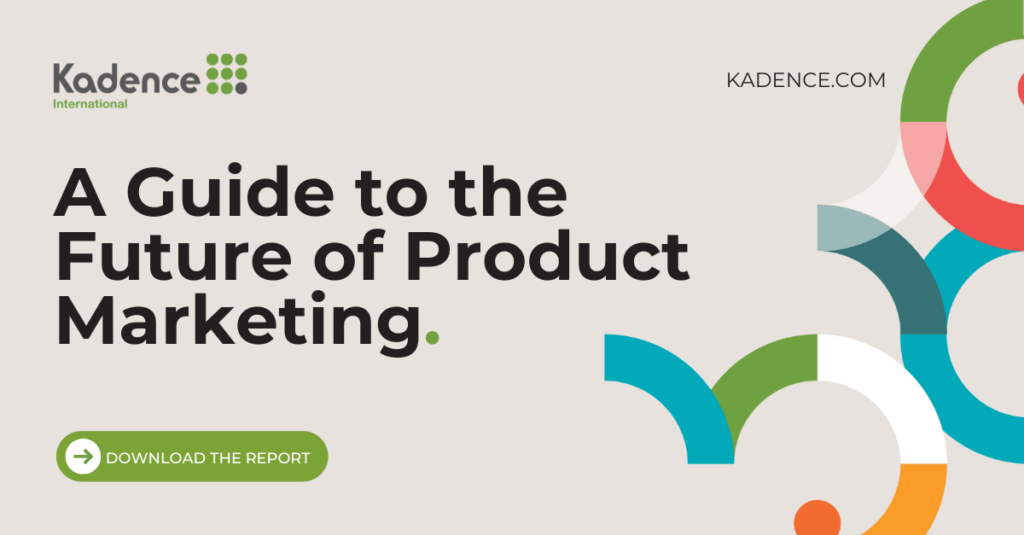
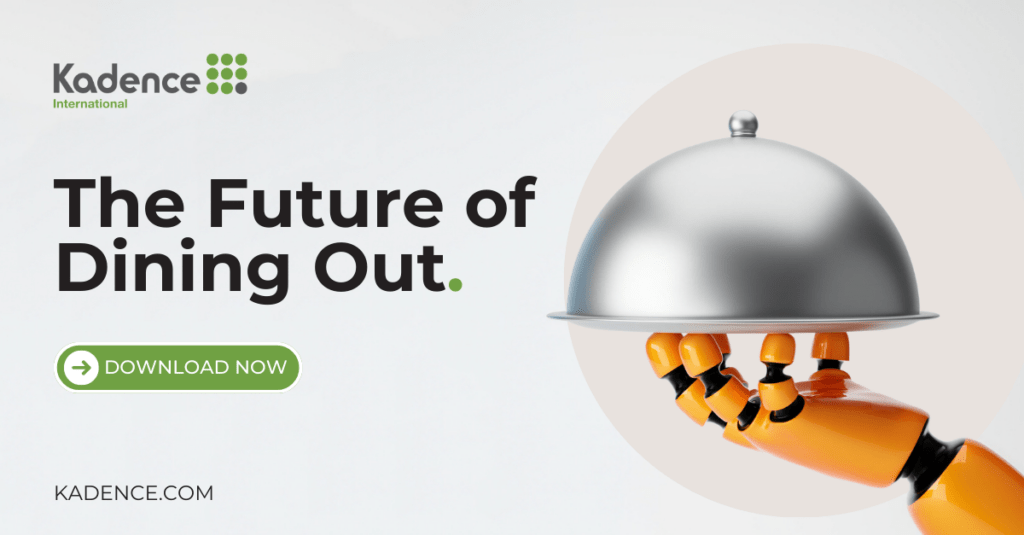

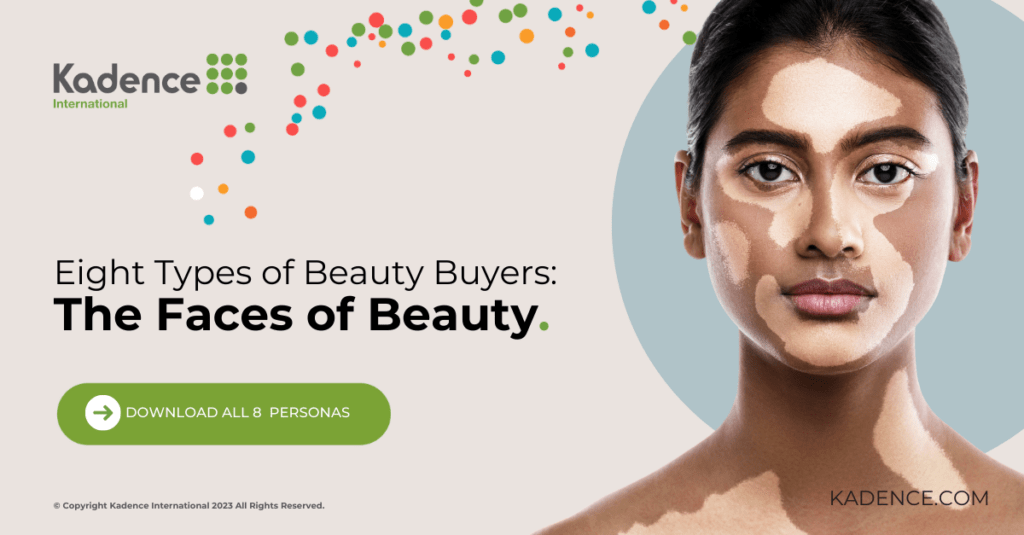
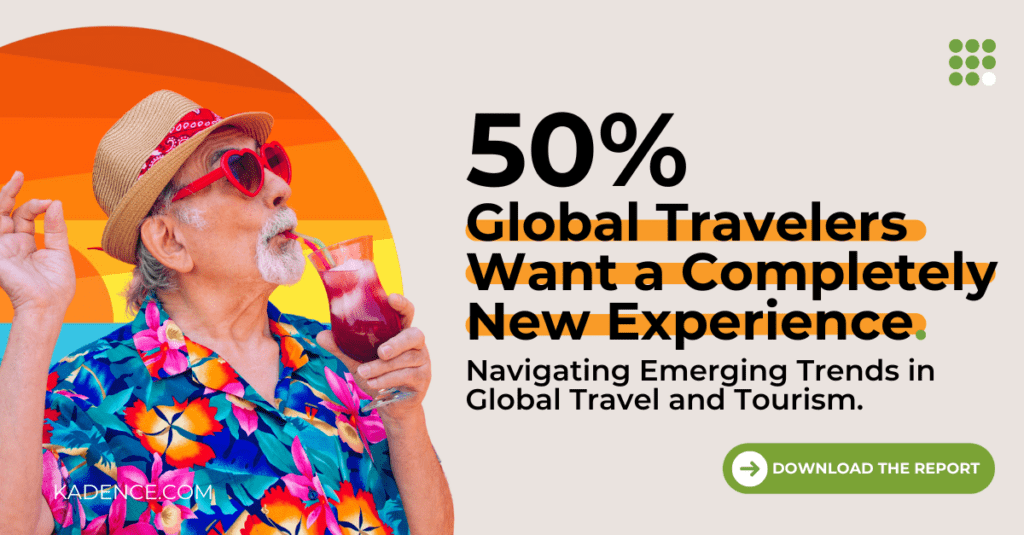
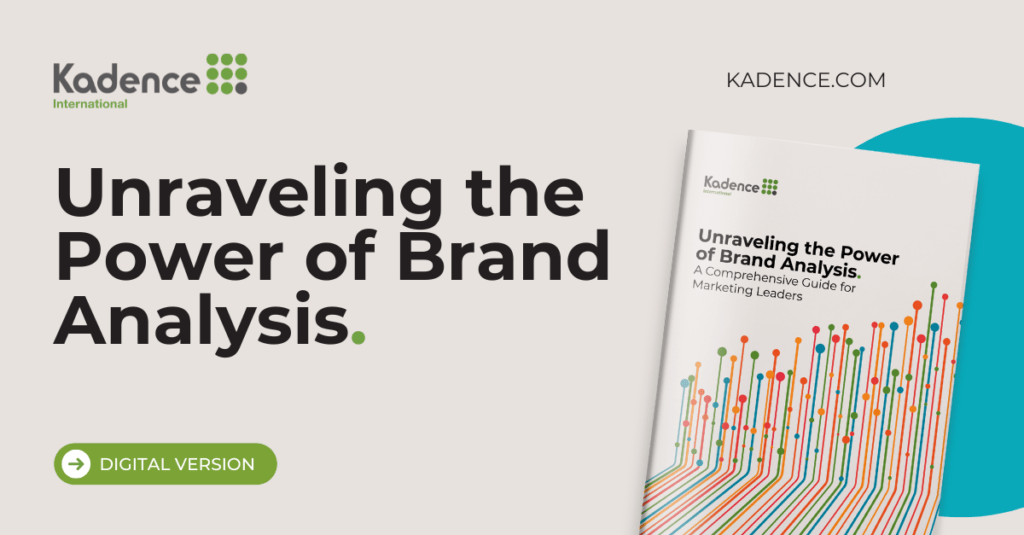




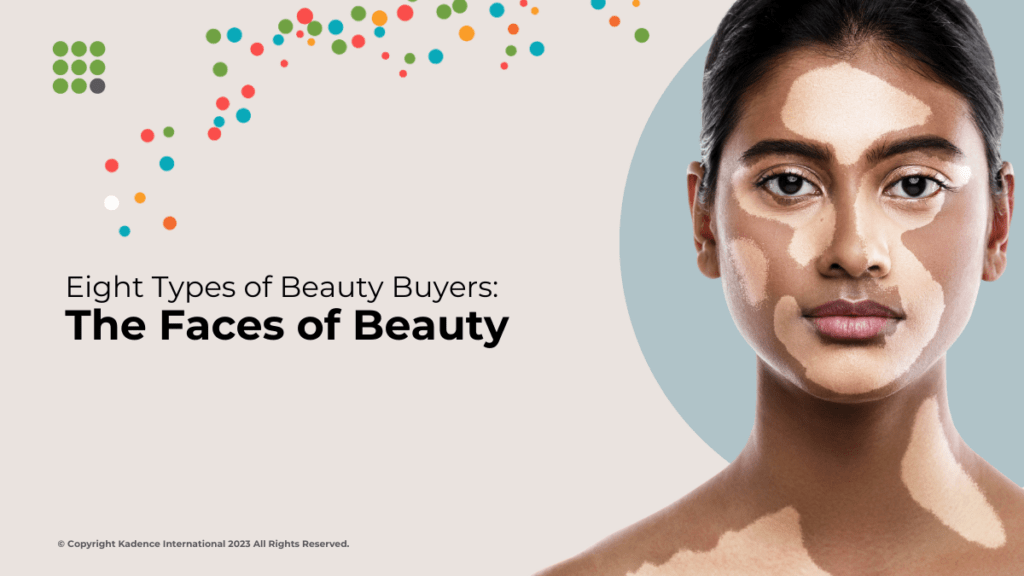











 Senior Marketing Executive
Senior Marketing Executive Sales & Marketing
Sales & Marketing General Manager PR -Internal Communications & Government Affairs
General Manager PR -Internal Communications & Government Affairs Vital Strategies
Vital Strategies
 Customer Intelligence Director
Customer Intelligence Director